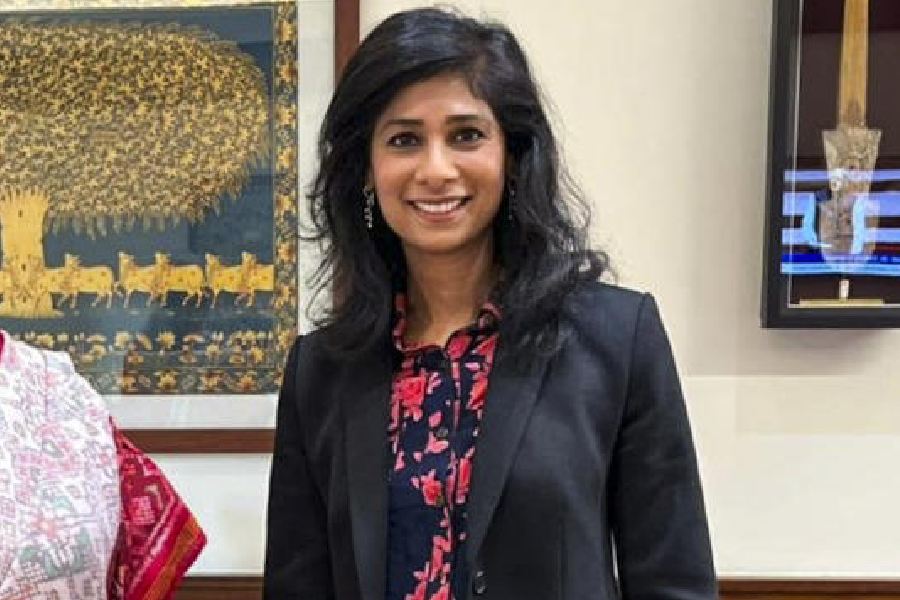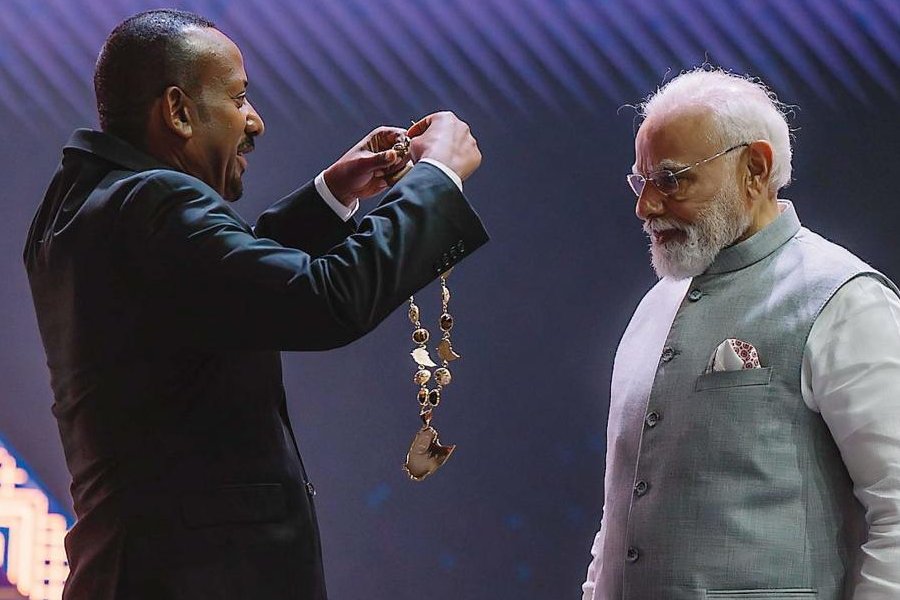 |
| Arjun Khanna’s flagship store in Mumbai is set in the 200-year-old Grant’s Building and has been outfitted with antique treasures; (below) Arjun Khanna Pic by Gajanan Dudhalkar |
 |
It’s a pre-Independence building that’s turning heads in Calcutta, with its vintage architecture with mullioned windows, gleaming teak balustrades and quaint interiors. The old-world effect has also been played up with broom-textured cement walls and a cart-wheel that has been turned into a chandelier. Spread across three floors, Ekru - The Flagship Store, breathes old world charm — and fashiosn.
Retro chic rules this 3,000sqft studio ‘curated’ by fashion designers Ekta Jaipuria and Ruchira Kandhari. The designers commissioned sculptor and interior designer Narayan Sinha to restore the property so that it aesthetically reflects the city’s glorious past. Says Jaipuria: “We wanted a space with character, and we wanted it to retain an old Calcutta flavour.” It took Sinha some three years to restore the building and he kept as close to the original as he could.
Designer Arjun Khanna too believes that one man’s junk is another man’s treasure. So, when he came across available space in the 200-year-old Grant’s Building in Mumbai’s Colaba area two years ago, he knew exactly what to do with it. He restored the interiors — keeping the cast-iron pillars intact and galvanising the plumbing pipes to hang curtains and clothes — and turned it into his flagship store.
Since he often trawls Mumbai’s antique markets and hunts out antique treasures, Khanna refurbished the store with his retro finds. He says, “I am always on the lookout for old, beautiful objects which are discarded by others.” Spread across 1,700sqft, the store is a rhapsody of antique trunks, a Portuguese love-seat from Goa, old Merritt sewing machines dating back to the 1930s, old cameras, typewriters and even an old Norton motorbike.
Today, when clients walk into heritage designer studios like those so painstakingly restored by Khanna and Jaipuria-Kandhari, they can pick not just from the season’s collections but also soak in the vintage air.
 |
| Maithili Ahluwalia chose to set up Bungalow 8 in a heritage building rather than a glitzy mall; (below) Maithili Ahluwalia |
 |
An increasing number of heritage buildings are getting designer touches and are morphing into smart retail spaces. Expect addresses steeped in history and vintage décor married to edgy fashion. Shubhranshu Pani, MD, retail, Jones Lang Lasalle, a real-estate services firm, explains the trend: “Colonial architecture teamed with rich history adds value to the customer experience.”
When you get to fashion designer Agnimitra Paul’s 1,800sqft studio-workshop on the first floor of a 200-year-old zamindar’s house on Palit Road in Calcutta, you enter a treasure-trove of sorts. Feast your eyes on vintage clocks, gramophones, a silver-plated paaner dabba (betel-leaf container) and even a haath pakha (hand fan) used during the shoot of Satyajit Ray’s Charulata.
Paul acquired most of the antique furniture and knick-knacks from auction houses and junkyards in the city. She showcases her wares in five rooms that are high on vintage décor, including giant mirrors and even a huge four-poster bed. It took her five months to decorate the store.
What’s working for these high-end lifestyle stores is the prevailing sense of antiquity. Take for instance, the concept store, Le Mill in south Mumbai’s dock area, set up by French expats Cecilia Morelli Parikh, Julie Leymarie and Aurelie de Limelette. They restored this once decrepit rice mill but retained its historical industrial architecture, both outside and inside.
Says Parikh: “We decided to retain the wooden beams, tiled roof, cement floor and some of the mill’s original machinery.” But they kept the colour palette of the interiors white and grey, so the stunning looks of the building don’t overwhelm the products. Simple white metal racks and white wooden ladders display home décor items, textiles, ready-to-wear fashion, accessories and more.
 |
| Ekru’s vintage interiors are all about textured walls, antique lamps and old photographs; (below from left) Ekta Jaipuria, Ruchira Kandhari and Narayan Sinha Pic by Rashbehari Das |
 |
When French luxury brand Hermès made its India debut in Mumbai, it settled into a 3,500sqft space in a heritage building rather than the spit and polish of a five-star hotel or luxury mall. Now the brand’s iconic Birkin bag finds pride of place amongst scarves, perfumes, jewellery, watches and wallets in a 150-year-old building in Mumbai’s Horniman Circle Garden area. The building stands regally near the iconic Asiatic Library and is located at Point Zero from where all distances in Mumbai are measured.
Then again, other heritage fashion retail spaces are located in age-old houses and exude a homely ambience. Design entrepreneur Maithili Ahluwalia set up Bungalow 8 in Colaba in 2008 in a decaying mansion built way back in 1857. Complete with an original wooden staircase, it retains 40ft high-ceilings and original terrazzo flooring. Ahluwalia says: “I believe in making unacceptable places acceptable, and today it’s become a huge trend. But initially everybody thought I was nuts when I moved here instead of a glitzy mall.”
Spread over 6,000sqft, Bungalow 8 is designed like a home with the dining and living section occupying the first floor, the bath and bed department on the second, while the third floor is all about fashion and jewellery. Home furnishings spill out of open art-deco cupboards, jewellery is draped on old, framed photographs and old-fashioned barbers’ chairs display an array of shoes and bangles.
 |
| Agnimitra Paul’s fashion studio is high on antique furniture and folk art |
Ekru also encourages an ‘at-home’ feel. From the lived-in furniture to a soon-to-be-set-up library on the terrace where clients will hang out over coffee, the emphasis is on a relaxed ambience. Says Kandhari: “We want people to have a relaxed fashion experience.”
Other heritage spaces like Hermès do double duty as venues for art exhibitions. The sunlit gallery space on the upper level offers beautiful views of the Asiatic Library and the Horniman Circle Gardens and acts as a de facto art gallery for art and photography exhibitions. Le Mill too offers an exhibition space. Retaining the original look of a heritage building is always a challenge. Ahluwalia for instance personally sat through sessions with her team as the building was scraped and the walls sandpapered to expose the original Burma teak rafters.
 |
| The French luxury brand Hermès is located in a 150-year-old heritage building in Mumbai’s Horniman Circle Garden area |
For his store, Khanna too restored the building’s original elements. He says: “Most people would prefer to conceal the wiring in their homes, but I opened up all the wiring. Even the cracks in the cement wall add to the look of the store.”
For the designers, it’s all about the experience. Khanna says: “The emphasis is on serving up a unique retail experience with a slice of history.”










